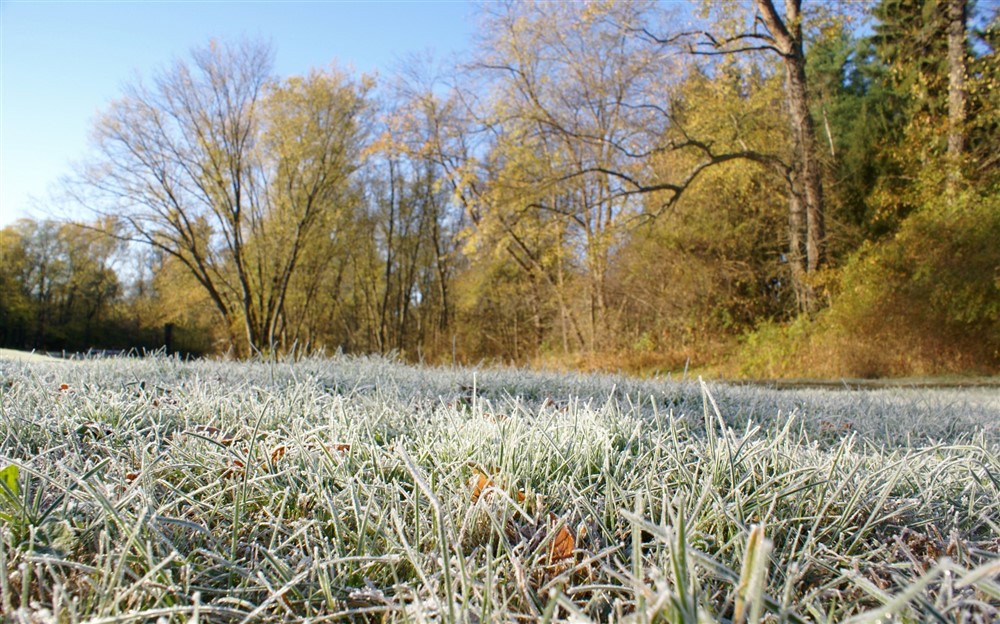What to Know About Frost

Frost can form when the air temperature is below 45 degrees; if we experience clear skies and calm winds, frost can settle in. Frost typically forms as the sun is rising, so if first light is 6:30 AM but sunrise isn't until 6:50 AM, frost may not settle in until 7:00 AM. So, when there is a strong chance it will settle in, maintenance will attempt to inform everyone beforehand to keep all patrons off of the grassy areas. Of note, we will use our on-site weather station for temperature readings to determine our frost threshold; as we have many microclimates on the property, readings from your phone app or O'Hare will vary from ours. One of our more noticeable microclimates that lends itself to earlier frost formation is the driving range target area, #1 and #2 on the 18, and #6 on the 9.
If you are curious about why it happens after sunrise, here is an excerpt from Ask Tom Why:
Dear Tom,
I am a golf course superintendent and frost is an obvious issue for golfers at this time of year. I have noticed that frost increases as the sun rises. Can you explain this?
—David M. Groelle, Long Grove
Dear David,
All surfaces constantly lose heat at night through a process called radiative cooling, which becomes most noticeable as dew or frost forms on the leafy surfaces of ground-hugging plants like grass on clear, calm nights. If a blade of grass chills below the dew point temperature, airborne moisture will condense onto it, yielding dew at temperatures above freezing (32 degrees) and frost at subfreezing temperatures. Temperatures often continue to fall for a short time after sunrise — though usually only a degree or two, because new heat input from sunlight is still less than radiative heat loss — thereby continuing the formation of dew or frost, or initiating its onset.
Regarding why we delay for frost, stepping or driving on a frosted plant can severely damage or even kill it. The simplest way to explain this is that when frost forms on the plant, it freezes the internal cell structure of the plant. When it is stepped on or pressure is applied the ice crystals (remember, like humans, grass is a large percentage of water) will fracture/shatter and rupture the plant cells. Think of it like a banana that has been dipped into liquid nitrogen; once dropped it shatters. That is essentially what happens to the frozen cells of the plant.
The USGA has 2 videos regarding this and a nice 5 step breakdown:
Fore The Golfer: Frost Delay - It's Worth The Wait
Frost Delays and Turfgrass Health
5 Things to Know About Frost Delays



